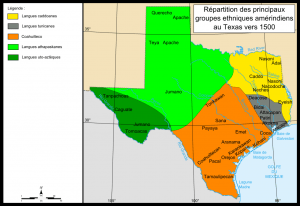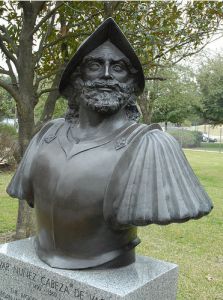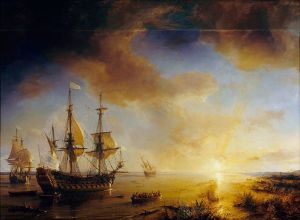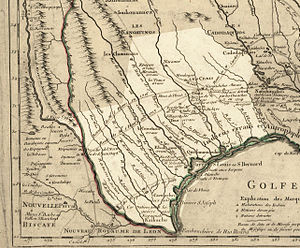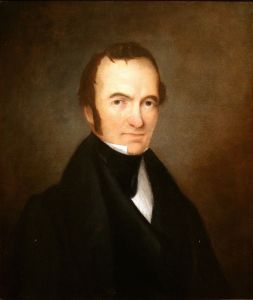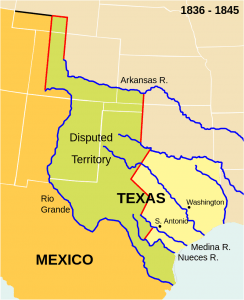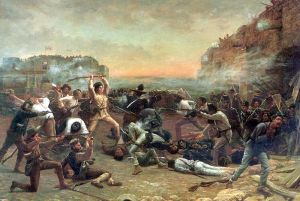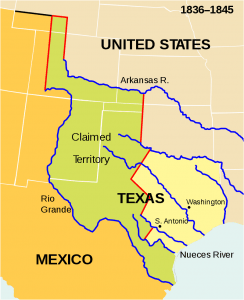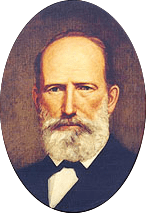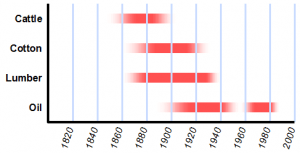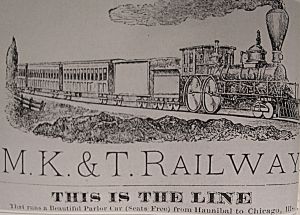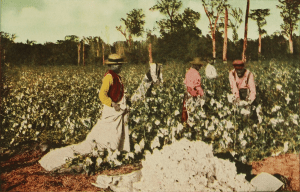Texas is a constituent state of the United States that became the 28th state of the union in 1845. From the Spanish Texas of the early 16th century to the modern 21st century Texas, a lot has changed. The state occupies the south-central segment of the country and is considered the largest state in area, after Alaska. It extends nearly 1,000 miles from north to south. And about the same direction from east to west.
History
The ancestors of West Texas were Native Americans who lived in camps about 37,000 years ago. They had only crude spears and flint-pointed darts that they used to hunt. Hence, they survived primarily on wild game. In other, more fertile, areas of East Texas, some of the Native American tribes established villages and beautiful farms. In addition to these, they also developed political and religious systems to make a better society.
To preserve peace and provide mutual protection, the Native Americans formed a loose federation, and hence they came to be known as the Caddo confederacies.
The Entry of the First Europeans in Texas
In 1519, the Spanish explorer, Pineda, created a map of the Texas coast. This was the event that marked the beginning of Spain’s rule in Texas. Therefore, we can also say that this era belonged to the Spaniards.
Nine years later, in 1528, the first Europeans entered the interior of Texas. They came to this land due to an accident. Cabeza de Vaca’s ship was wrecked near Galveston. He was in the ship along with a small band. These people met Native Americans while wandering through the Texas area. The area was sparsely settled, but still, the culture and habitation of the Native Americans had a great influence on the later history of the region.
Cabeza, the first European to explore the interior of Texas, finally made his way to a Spanish settlement in Texas. He entered Mexico City with the tales of the celebrated “Seven Cities of Gold.”
In the early 16th century, the explorer Coronado, in a search for the seven cities, hiked through the present New Mexico, West Texas, all the way North to Kansas. Although he failed to find the cities of gold, he strengthened the claim of Spain on Texas. Today, one of the archeological sites, which is considered connected to Coronado, is being studied in the Texas Panhandle by a team of archeologists.
The Entry of the First Frenchmen in Texas
Although Pineda already claimed the area, it was essentially ignored for more than 160 years. It is said that the early settlement by Europeans in Texas occurred by accident. The French claimed Texas when La Salle visited the land in 1685. He established the first French Colony at Fort Saint Louis in the Matagorda Bay area.
However, two years later, in 1687, La Salle was killed by his own men. By the year 1690, the small French colony was destroyed by Indians and disease.
A team of Texas Historical Commission archeologists found one of La Salle’s frigates (the Belle), in the dark waters of Matagorda Bay in 1995. After one year, in 1996, the exact location of Fort Saint Louis was pinpointed near Victoria. These incredible discoveries promise to provide a lot of answers to questions related to this era of Texas’s history.
Spanish Texas
The news of the destruction of the small French force was spread like fire in Mexico City, and the Spaniards already wanted to get more land. Spain learned quite a lot about the geography of Texas during their number of expeditions in search for Fort St. Louis. In 1691, General Domingo Terán de los Ríos was appointed as the first governor of Texas by Spain.
On his first visit to Mission San Francisco de la Espada, Terán discovered that the priests that were sent by Spain to Texas had established a second mission nearby. However, they were having a hard time converting the natives to Christianity. Instead, the natives were stealing the mission cattle and horses and showed little to no respect at all to the priests.
When Terán was leaving for Spain, most of the Spanish missionaries decided to return with him, leaving behind only a few people. The people who were left at the missions were three religious men and nine soldiers. A smallpox epidemic was left behind by the group. Due to this, the angry Caddo threatened the remaining people of Spain. Therefore, they also abandoned both missions and came back to Coahuila.
For the next two decades, Spain again ignored Texas like it was never there.
Martín de Alarcón, who was appointed as governor of Texas in late 1716, led a group of 72 people that included ten families, into Texas in 1718. The same year, the Spanish missionaries founded San Antonio in Texas.
The hostile natives and isolation from other Spanish colonies was the reason why Texas was kept sparsely populated. However, it was only until the Revolutionary War and the War of Mexican Independence. Later, the newly established Mexican government allowed the settlers from the United States to claim land there. This step led to a population explosion. After many years, the Texas Revolution broke out, and the state became an independent nation in the year 1836.
Revolution and the Republic
In the early 1830s, Stephen F. Austin announced that the only way to secure freedom is by going to war with Mexico. The tensions started to grow in Texas that caused cultural, political, and religious differences between the Mexican government and the Anglo Americans.
Texans supported Santa Anna because they were hopeful for relief from obstructive governmental measures. Stephen F. Austin expected a friendly hearing, but what happened was quite the opposite of what he thought. He was imprisoned in Mexico City for encouraging insurrection.
However, Stephen was freed in the year 1835, and he returned home only to find out that battles had already developed between the Mexican troops and the colonists, and Santa Anna was preparing to send reinforcements. Due to the increasing tensions and unrest, the president of Mexico, Antonio Lopez de Santa Anna, reinforced Mexican troops in Texas. Hence, the battle of Gonzales took place on October 2, 1835, which is considered the first battle for Texas’ independence.
In 1836, the provisional government issued a declaration of independence at Washington-on-the-Brazos. David G. Burnet was appointed ad interim president of the new Republic of Texas. Sam Houston was appointed its military commander. Stephen F. Austin became commissioner to the United States. His mission was to secure strategic aid and enlist volunteers.
The famous Battle of the Alamo in San Antonio was fought for nearly two weeks, from February 23 to March 6, 1836. This siege’s strategic objective was to delay Mexican forces and thus allow the military organization of the Texas settlers.
As the battle included a massive attack over the walls, about 183 to 189 (or more) defenders were all killed. The defenders who were killed due to the attack included some of the famous frontiersmen Davy Crockett and James Bowie.
On April 21, 1836, Sam Houston led a surprise attack on the Mexican troops at the San Jacinto River. To his luck, he succeeded in capturing Santa Anna and secured a victory for the Texans. The Texas Revolution wasn’t just an ordinary battle between the Mexican troops and the Anglo settlers but a revolution for the people who were living in Texas against the tyrannical rule.
The majority of leaders and armed settlers who took part in the revolution were Mexicans. The Republic of Texas was officially established with Stephen F. Austin as secretary of state and Sam Houston as president. Hence, the cities were named in their honor; Houston and Austin. Houston was the capital of Texas until 1839 when Austin was approved as the permanent capital of the state of Texas.
The Republic of Texas faced quite a lot of problems in its ten years. They requested financial aid and made efforts to secure loans from foreign countries, but all in vain. They required a mobile armed force to protect against the raids from Mexico and occasional attacks from the natives. Hence, a squad of armed men, known as Texas Rangers, was appointed to ride long distances quickly in order to punish or repel raiding parties.
Annexation and Statehood
In 1836, Texans voted for annexation by the U.S., but the proposition was straight away rejected by both Andrew Jackson (7th U.S president) and Martin Van Buren (8th U.S president) administrations. Great Britain was in favor of keeping Texas as an independent state so that the United States could not do a westward expansion. However, this move of Great Britain only helped to attract Americans towards annexation.
Finally, in 1845, annexation was approved by the Texans and U.S. Congresses. Therefore, in 1846, the transfer of authority from the republic to the state of Texas took place. The unique thing that happened in these annexation agreements was a provision that permitted Texas to retain title to its public lands.
The area between the Rio Grande and the Nueces River and the U.S. annexation of Texas led to the Mexican-American War. In 1847, the United States troops invaded Mexico, and Winfield Scott took over Mexico City on September 14, 1847.
The Treaty of Guadalupe Hidalgo was signed on February 2, 1848, according to which Mexico gave up its claim on Texas. However, the American Civil War led to a lot of disruption. Texas secede from the Union on January 28, 1861.
Sam Houston was removed from office because he strongly opposed secession. In addition to this, he also refused from taking the oath of allegiance to the Confederacy. Houston was replaced by Lieutenant Governor Edward Clark. This marked the beginning of a long, bloody siege between the North and South.
During the war, Texans had to confront a lot of problems. They had to defend themselves from attacks by the natives, federal gunboats, invading soldiers as well as Mexican encroachments. Although federal forces ultimately gained control of the lower Gulf Coast, they were not able to move ahead far inland. Four years later, the Union would prove victorious.
Modern Texas
Texas saw rapid development in the population and economy during the last three decades of the 19th century. In 1870, the state was readmitted to the Union under a new constitution. By the year 1875, the Comanche were forced onto a reservation, which is present-day Oklahoma. A lot of immigrants arrived at the state to settle; hence towns were established, farming spread throughout the major areas of the state, and the cattle business started to thrive on the plains of West Texas.
Increased shipping and railroad building helped Texas in making new links with the rest of the world. Manufacturing continued to grow rapidly. By the beginning of the 20th century, the population of Texas had grown to over three million.
In 1901, an enormous oil gusher was found at Spindletop (Beaumont), which led to a new economic era for the state of Texas. A number of oil companies were formed, oilmen began to search for new oil deposits in the state, and a lot of people were provided new jobs due to the increased refining and marketing activities. Hence, oil generated massive incomes for the state of Texas.
Since the whole world suffered from The Great Depression of the 1930s, Texas was no exception. However, it later benefited from the tremendous industrial expansion that occurred during World War II.
Economic and population were both constantly growing in the post-war era. The industries of chemicals, oil refining, and petrochemicals continued to dominate the economy. In addition to these industries, aerospace components, electronics, and other high-tech items became increasingly important as well by the end of the 20th century.
Between 1900 and 1980, the population of Texas increased fourfold. One-third of this population was either African-American or Hispanic. The ethnic composition changed drastically by the end of the second decade of the 21st century. During this era, around 40% of the population in Texas was Hispanic, while only 13% was African American.
Since the beginning of the 1950s, Texans played a significant role in national politics. Sam Rayburn of Bonham served as speaker of the United States House of Representatives for 17 years. His tenure was longer than that of any other political member. Lyndon B. Johnson, who served as a Texas congressman, was appointed as majority leader of the United States Senate in the late 1950s. Later, from 1961 to 1963, he would become vice president of the United States, and then 36th president from 1963 to 1969.
In 1988, George H.W. Bush of Houston, who was vice president of the United States from 1981 to 1989, got elected as the 41st president, who served until 1993. Later, his son George W. Bush served two positions; as governor of Texas and 43rd president of the United States from the year 2001 to 2009.
Today, over 28.7 million people live in the state of Texas (population estimate as of 2018), making it the second-largest state of U.S. by area and population.


